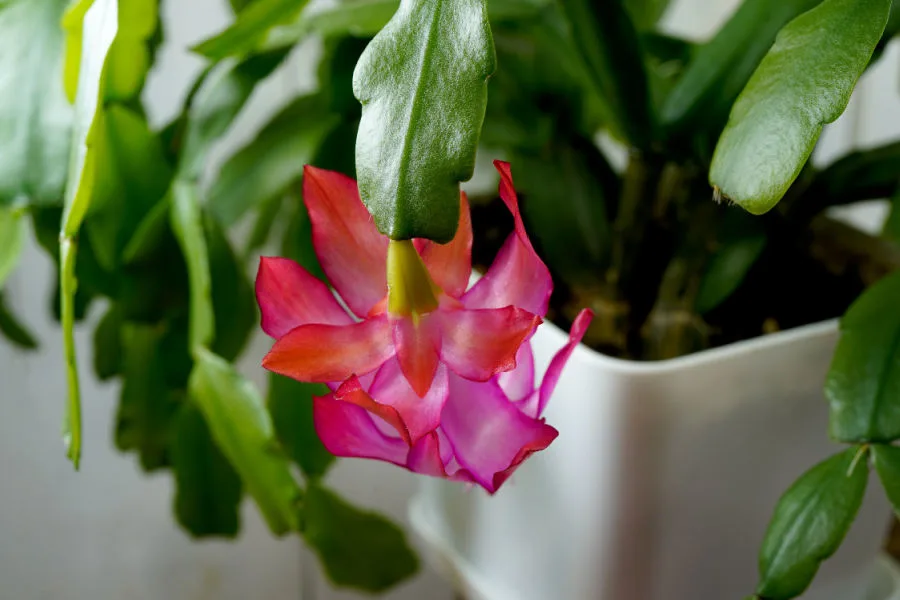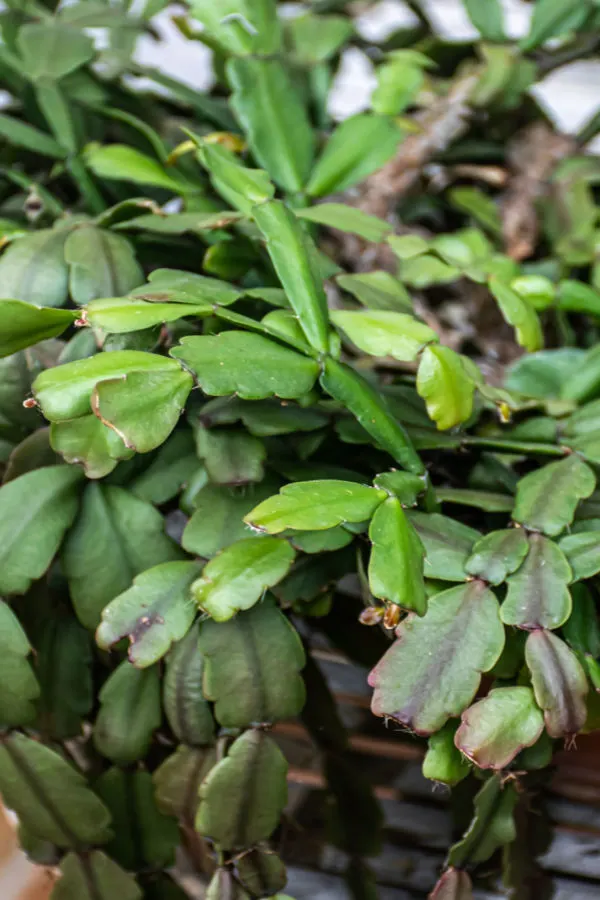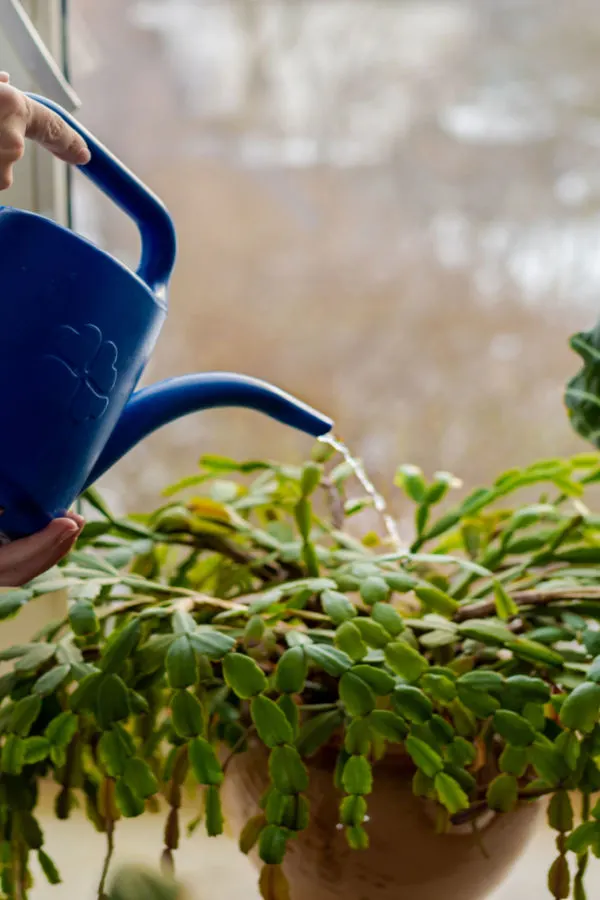Looking for a few tips and tricks to keep your Christmas cactus healthy during the holiday season and beyond?
Christmas cacti have long been one of the go-to houseplants that help ring in the holiday season. True to their name, when given the proper care, they usually come into bloom right as the Christmas season arrives.
With its long blooming season, the Christmas cactus can usually stay in bloom from four up to six weeks, giving it more than enough flower power to last from Thanksgiving all the way into the new year. Even better, if you are lucky enough, it can even bloom a second time in late winter / early spring for even more color.

The shiny foliage of the cactus, along with its ultra-bright blooms really do fill a home with holiday cheer. With bloom colors that range from deep red and white, to purple, pink and salmon, there is a variety to fit any decor.
One additional advantage of a Christmas cactus is just how long it can live. In fact, with minimal care, they can often survive for decades. Add in that they can quite easily be propagated to create multiple new starts, they are a great plant to pass down to family and friends for even more holiday traditions.
Here is a look at how to get the most from your Christmas cactus this holiday season, and how to keep it alive and thriving for many years and bloom cycles to come.
How To Keep Your Christmas Cactus Healthy – Before & After Christmas
The biggest misconception with the Christmas cactus is that it hails from a hot, dry desert. And, because of that, it should be cared for like a true cactus plant.

The Christmas cactus actually hails from a tropical Brazilian / South American environment. With its heritage and roots coming from a more tropical setting, its care and requirements are much different than succulents and other true cacti plants.
Locating Your Christmas Cactus For Success
For starters, the Christmas cactus performs best in bright, indirect lighting. Since it is not a desert plant, it does not want anything to do with full sun. In fact, placing it near a window that receives too much direct sunlight will often burn the foliage.
Place plants in a well lit room but away from windows. A more humid room with moderate temperatures between 65 and 70 degrees Fahrenheit is ideal. When blooming, too much heat or direct light will decrease both the blooms and blooming periods.
Proper Watering – How To Keep Your Christmas Cactus Healthy
Although Christmas cacti are a humidity loving plant, their roots cannot sit in water. If they do, they can easily become susceptible to rot. To prevent this from occurring, only water when the top inch or so of soil is completely dry to the touch.

If water runs through the plant to a liner or saucer below, be sure to empty it away from the plant. You can also place small marbles or glass beads in the saucer to keep the water from making contact with the roots. Another great way to easily check the soil moisture is with an inexpensive soil moisture probe.
The best part of growing a Christmas cactus is that it is extremely low maintenance. Continue to water and care for you plant as usual through its bloom cycle. As the blooms start to fade, remove any spent flowers and foliage that become unsightly or damaged.
Christmas Cactus Care After The Holidays – How To Keep Your Christmas Cactus Healthy
Eventually, all of the blooms will begin to fade and fall off. Continue to remove spent flowers to keep as much energy to the plant as possible. Like nearly all plants, the Christmas cactus will continue to use its energy to attempt to heal fading blooms until they are removed.
In some cases, the plant will begin a new cycle of flowers in late winter. Especially if the light and temperatures where it is growing help to create the right conditions for new flowering.
The entire blooming process of the Christmas cactus is driven by a plant receiving less light and cooler temperatures. Many gardeners move their plants to a cool basement or garage for 4 to 6 weeks to encourage a second bloom. It doesn’t always work out, but when it does, it is beautiful to behold!

Even without a second bloom, the plant can continue to be a wonderful houseplant. As spring and summer arrive, the plant can be grow indoors quite well with adequate indirect lighting. You can also move your Christmas cactus outdoors to a shady porch, patio or garden setting.
The important point to remember is that the plant has tropical origins. With this in mind, always be sure to keep inside when any threat of temperatures dropping too low are in the forecast.
Pruning & Repotting – Christmas Cactus Care
Prune plants back a bit in the spring to help keep their shape and form. Remove renegade branches or any damaged foliage. Do not over prune at this point, just help the plant keep its shape. Place healthy cutting into a moist potting soil to generate new plants easily.
A Christmas cactus plant will not need to be transplanted often. In fact, it blooms better when the root structure is more tight than less. When and if re-potting, choose a container only slightly larger than the existing one. This will keep roots close for best performance.
Fertilizing – How To Keep Your Christmas Cactus Healthy
Christmas cacti should only be fertilized during the late spring and summer months. This allows for a bit of new growth and for plants to store energy for the winter blooming season. Fertilizing too close to or during the blooming season can actually decrease or even stop blooming.
Use a high quality all-purpose indoor plant fertilizer. Do not use any fertilizers that are intended for succulents or true cacti plants. Remember that although the plant carries the “cactus” name, it is far from a cactus.

Fertilize once a month from late spring to August. Be sure to stop fertilizing in the fall to allow the plant time to prepare for December blooming. Product Link : Espoma Indoor Plant Food
Getting Your Christmas Cactus Ready For Christmas Again – How To Keep Your Christmas Cactus Healthy
About 8 to 10 weeks before Christmas, move your cactus to a cool room to give it a rest. The ideal temperature will be between 50 and 55 degrees. A cool dim basement or semi-heated garage are both great choices.
This cooling off period allows the plant to get ready for its blooming cycle again. Remember that low light and cooler temperatures are what signal plants to begin blooming before Christmas.
A few weeks before Christmas, move your plant back to a humid room with temps between 65 and 70 – and get ready to enjoy another beautiful blooming Christmas season. Here is to getting the most from your Christmas cactus this year, and to keeping it around and in the family for many years to come! Happy Gardening – Jim & Mary.
Jim and Mary Competti have been writing gardening, DIY and recipe articles and books for over 15 years from their 46 acre Ohio farm. The two are frequent speakers on all things gardening and love to travel in their spare time.
As always, feel free to email us at thefarm@owgarden.com with comments, questions, or to simply say hello! You can sign up for our free email list in the subscribe now box in the middle of this article. Follow us on Facebook here : OWG Facebook. This article may contain affiliate links.
